The Best Blenders in 2024 Tested and Reviewed
After spending several months putting a range of highly-rated models through a series of tests, we’re confident that our finalists are the best blenders on the market.
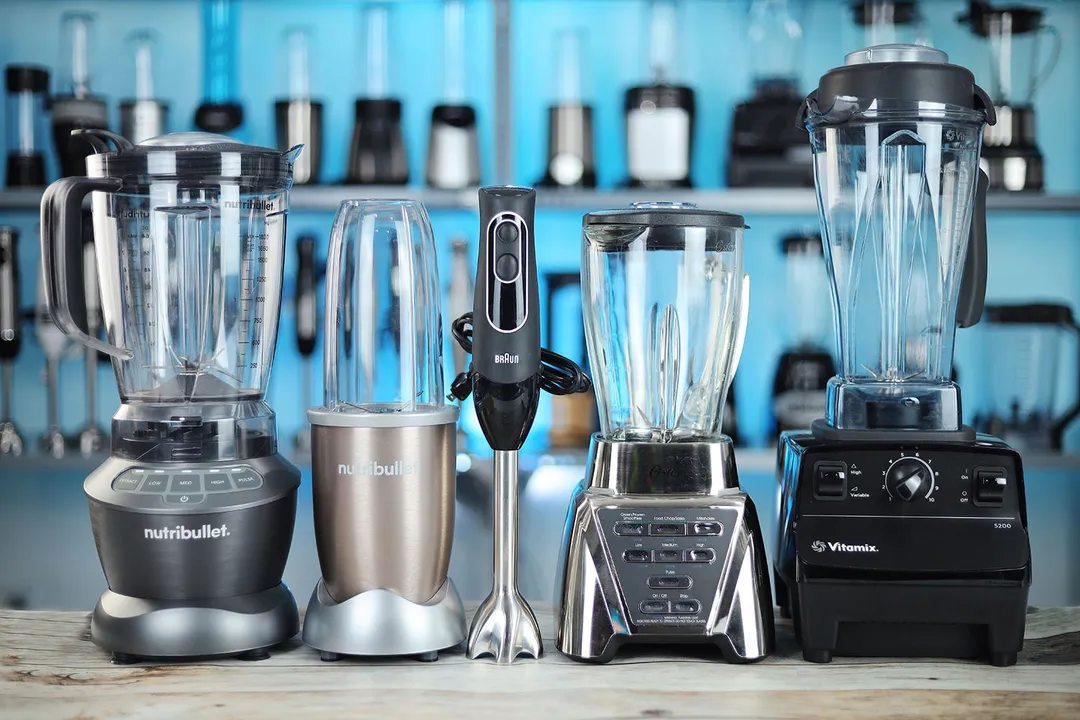
The versatile culinary appliances we call blenders come in many forms, each designed to serve a particular purpose. From immersion blenders made to blend soups directly in the pot to countertop varieties which excel in pulverizing frozen-fruit smoothies, you’re not short on options.
So, when you ask, "Which are the best blenders?" The answer isn't about a specific brand or model; it's about meeting your personal culinary needs. Are you a nutty sorcerer who wants to emulsify whole almonds into creamy nut butter? Or perhaps you're more the smoothie enthusiast on the hunt for a green smoothie blender that makes you forget you're drinking spinach? You might be a humble babysitter hunting for the ideal blender to turn wholesome fruits and vegetables into silky pureés for your little ones.
To bring you the ultimate guide, we put 37 models through their paces, subjecting each to a series of tests designed to uncover the true blending champions. With every whir, pulse, and blend, we uncovered their strengths, weaknesses, and everything in between.
How We Test
Our testing methods mimic everyday kitchen tasks. Though different blender types have unique testing criteria, consistency is maintained within each category for direct product comparisons.
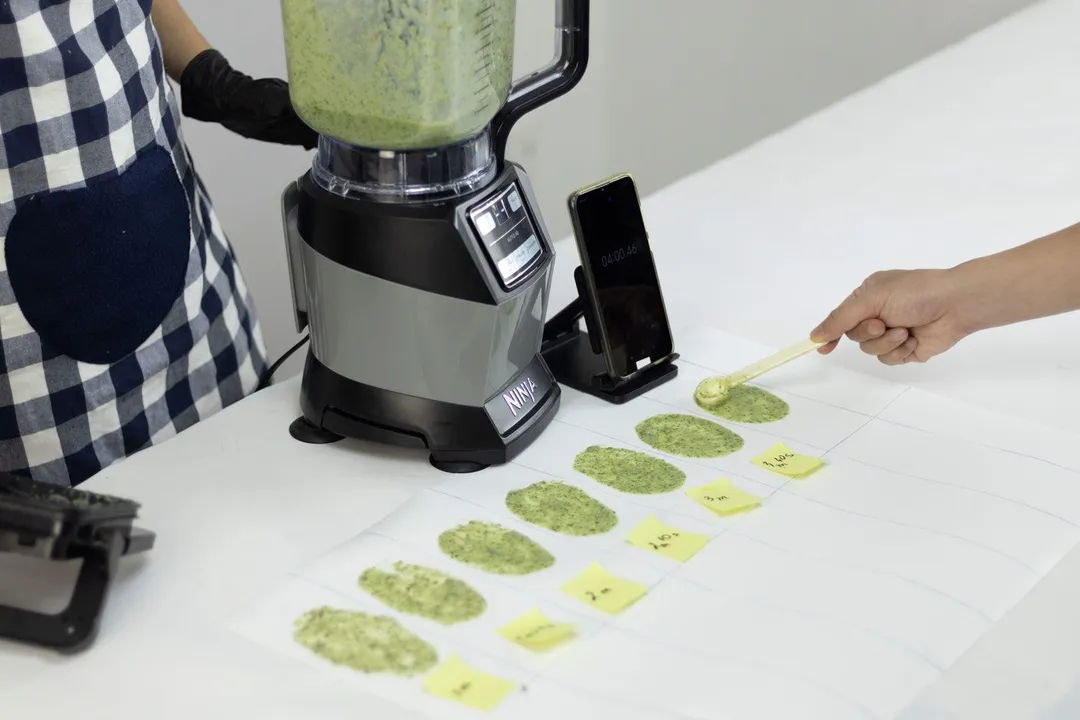
For full-sized blenders, tests focus on performance, durability, and usability in processing large volumes.
- Smoothie: We blend a mix of kale, apple, pineapple, banana, and milk. The test concludes either when a smooth, homogeneous texture is achieved, or upon reaching the 4-minute mark. The score factors in blending time and the final blended result.
- Frozen Fruit Smoothie: Our testing smoothie is a combination of mango, strawberry, pineapple, and plain milk. We blend at the highest speed or a "Frozen Smoothie" mode. The aim is to achieve an ice cream-like texture within a maximum of five minutes. Scoring evaluates blending time and result.
- Additional tests include Almond Butter, Protein Shake and Crushed Ice Cubes to offer insights into a blender's versatility, especially for those keen on homemade nut-based spreads, fitness beverages and icy concoctions.
In our design’s evaluation, we examine the blender’s blade strength, overall build quality, and the functionality of the control panel. We also consider hands-free blending, noise levels during operation, ease of assembly, and cleanability post-blend.
For immersion blenders, we conducted standard tasks like Puréed Hot Soup, Frozen Fruit Smoothies, Mayonnaise, Almond Milk, and Whipped Egg-White.
Personal blenders, on the other hand, were evaluated basing on their suitability for on-the-go lifestyles, with Protein Shakes, Frozen Fruit Smoothies, Fibrous Greens, and Crushed Ice Cubes tests.
How We Picked
Recommendations are based upon the testing results and their associated scores. We take into account the specialized strengths of a product, the situation it’s best suited for, and the personal circumstances where it will fit best.
Our Top Picks
Besides a list of the best blenders, we’ll also describe the pros and cons of each unit we tested. Let’s take a look at our recommendations now:
1. Best Overall: Vitamix 5200 Blender
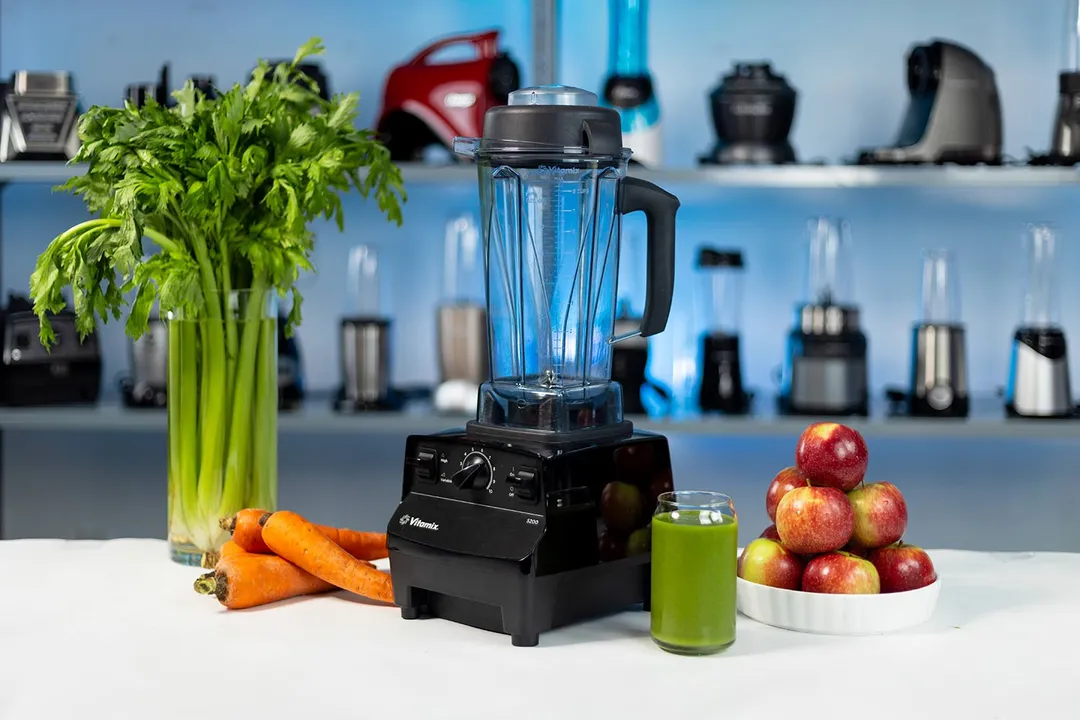
Things We Like
- A lot of user-friendly features.
- Versatile speed settings.
- Capable of blending non-stop for up to six minutes.
- Rapid and potent acceleration.
- Excellent for both hot and icy blending applications.
- Ideal for preparing family-sized batches.
- Longer-than-average 7-year warranty.
Things We Don’t Like
- The container does not lock onto the base
- Average ice-crushing capability
Of all the blenders we tested, the Vitamix 5200’s perfection makes it stand out as a top-tier. It exemplifies the brand’s commitment to superior craftsmanship, impressing users with its remarkable durability, user-friendly design, and high-caliber performance.
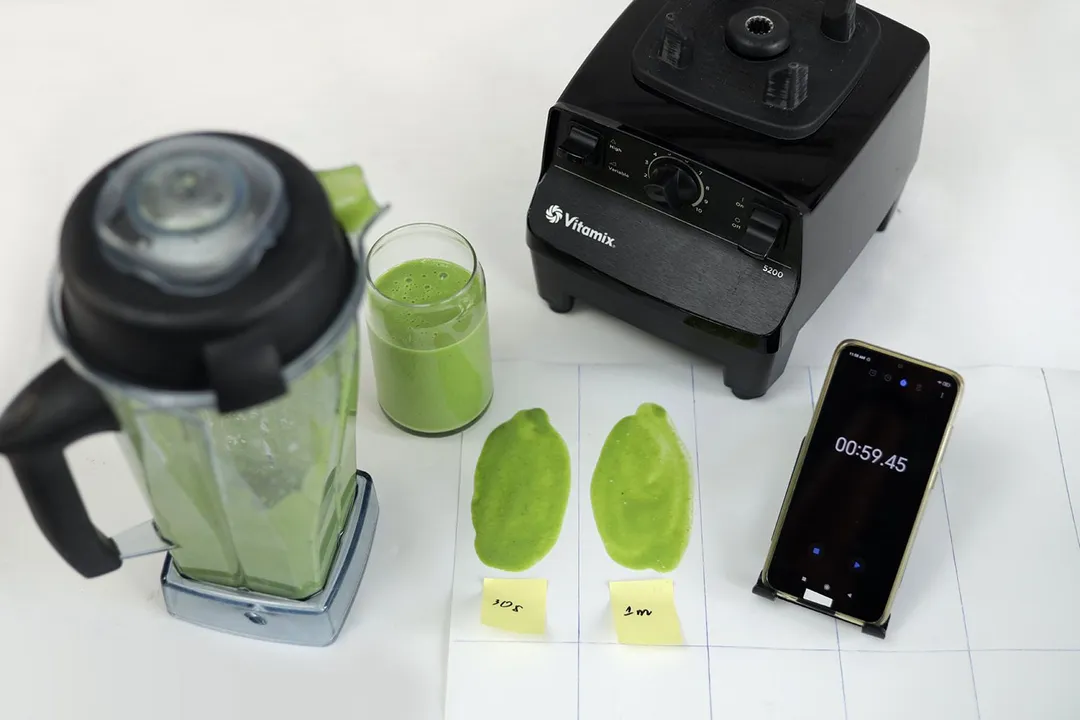
Operating on approximately 1500 watts (2 horsepower), this blender reaches a remarkable speed of 23,122 RPM. Through our tests, the machine proved capable of handling nearly any task. Whether turning a challenging mix of leafy greens or rock-hard frozen fruits into velvety smoothies or crafting a perfect protein shake loaded with tough raw nuts, it consistently delivered outstanding results in just one minute.
More impressively, this performance was often 2-3 times faster than that of competitors. Its 60-second transformation of almonds into a creamy butter stood out as well.
While it did fall short in completely blending the full 12 oz of ice, the crushed ice it produced was still fine enough for most cocktails and slushies; it was just not as snow-like as you might desire.
The blender’s generous dimensions of 8.9 inches in width, 7.7 inches in length, and 17.4 inches in height might be bulky for some cupboards . We consider the bulk worthwhile, though, given the machine’s ample blending capacity. Clear labeling and intuitive controls make this blender very user-friendly. Assembling and disassembling the Vitamix 5200 is an effortless process. However, the clean-up may be a bit challenging for those with larger hands due to the narrow blending container.
Read our full Vitamix 5200 Blender in-depth review
2. Best Runner-Up: NutriBullet Blender Combo 1200 Watt
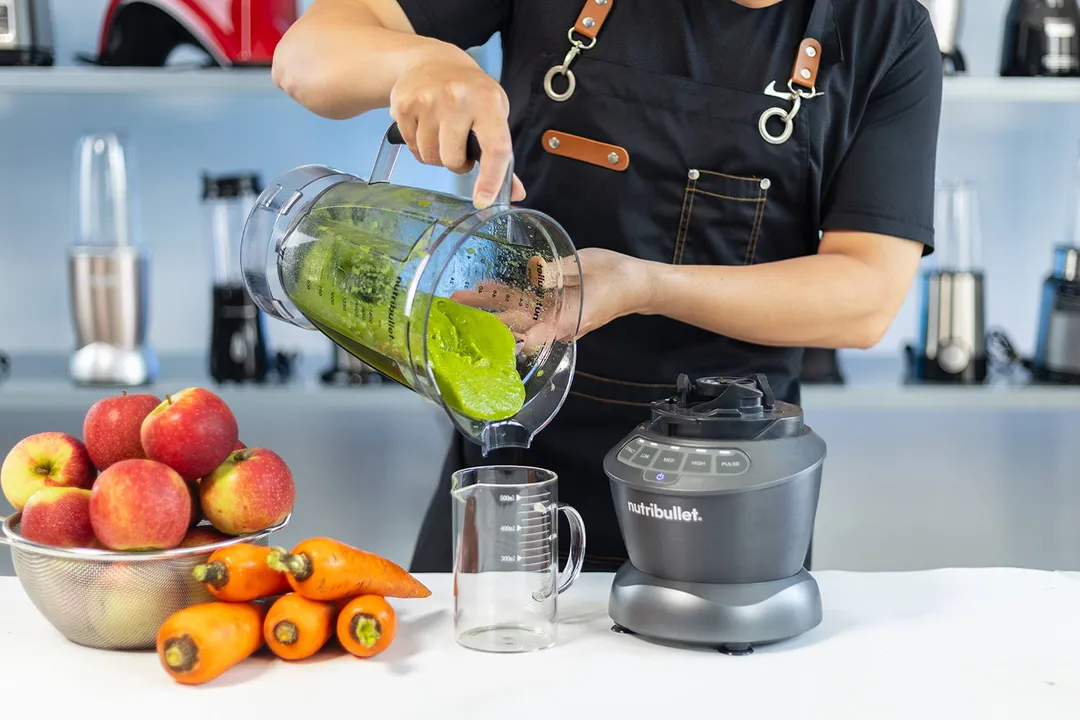
Things We Like
- Exceptional performance in creating smoothies from fresh or frozen fruits, protein shakes, and crushed ice
- User-friendly, thanks to its minimalist design
- Great balance of price, function, and quality.
- Generous accessory inclusion.
Things We Don’t Like
- Underperforms with butters.
- Container may detach during use.
- Cleaning can be tedious.
Priced more modestly than our top pick, the NutriBullet ZNBF30500Z didn't falter in our tests. Its 1200-watt motor particularly excelled at blending green smoothies, taking just a minute to yield a velvety blend that broke down even fibrous kale.
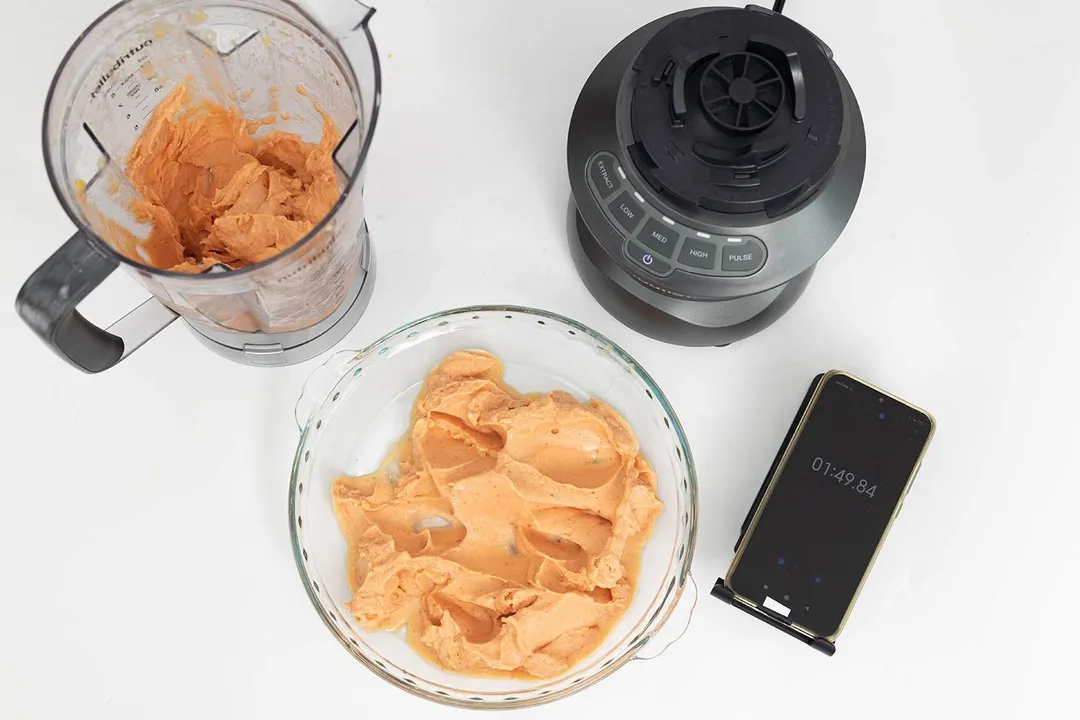
Frozen fruit smoothies and protein shake were another of its strong suits; from start to finish, the blender could manage smooth output in only less than two minutes. Its ice-crushing capacity even outshined the heavy-hitting Vitamix 5200 as it could turn 12 ounces of ice cubes into a fine snow-like texture within just 30 seconds.
Making almond butter, however, was a little bit challenging, requiring up to 6 minutes for a completion. Still, the pay-off of a preservative-free, homemade spread was worth the wait.
In terms of build quality, NutriBullet defies the convention that affordability equals poor quality. The blender's robust construction employs high-impact, BPA-free plastic for the motor base, containers, and lids, ensuring longevity without sacrificing safety.
On the downside, the blender’s container is occasionally unstable while blending, and its lid is hard to remove. Cleaning can also be a slight challenge due to grooves on the container.
Read our full NutriBullet Blender Combo 1200 Watt in-depth review
3. Best Small: Oster Pro 1200 Blender
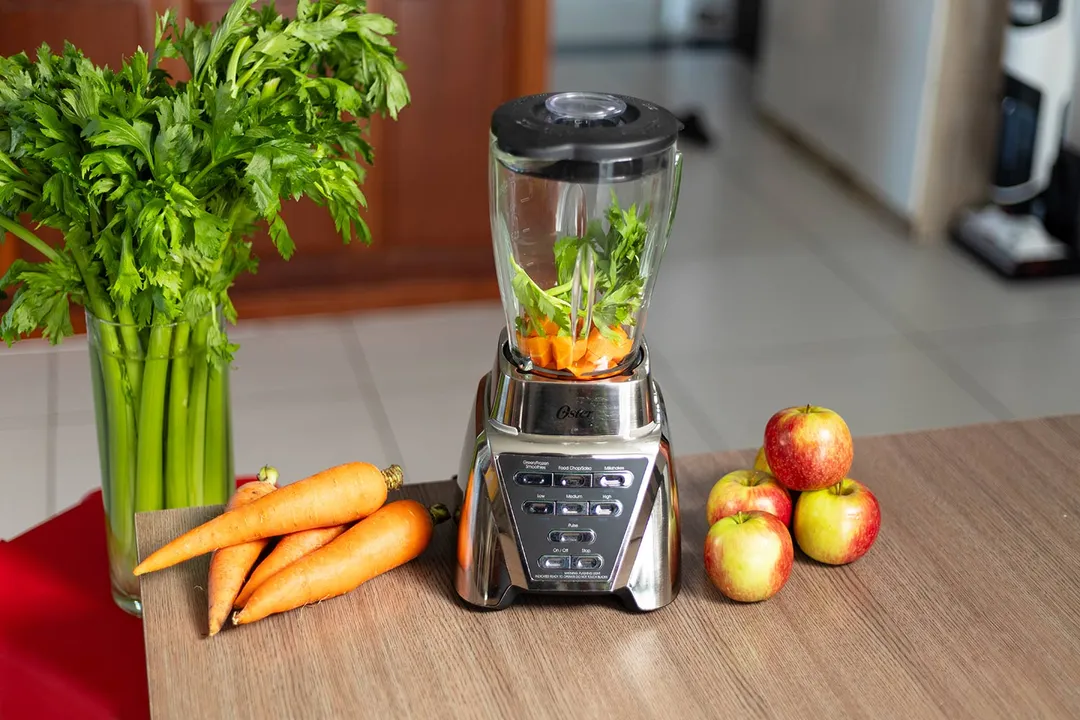
Things We Like
- Great value for the price
- Intuitive button layout
- Easy to clean and assemble
- Perfect for green smoothies, almond butter, and crushed ice
Things We Don’t Like
- Gimmicky control panel
- Struggles with frozen fruit smoothies
In our testing, the Oster Pro revealed an unexpected quirk. One of its crowning achievements was ice-crushing, where it managed to reduce 12 ounces of ice into a granulated texture in under 45 seconds—a performance unmatched by any other mid-range blenders we assessed.
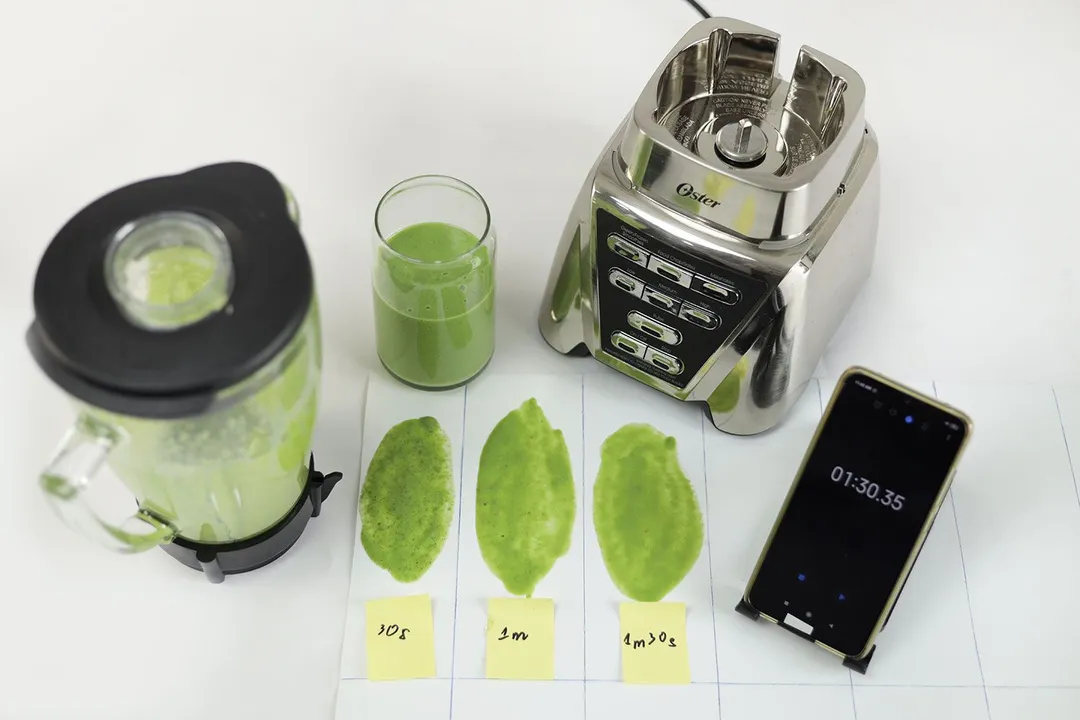
Its expertise in blending fresh fruits was also very impressive. In just 90 seconds, apples, bananas, and pineapples were effortlessly transformed into a delectable, velvety mixture.
Oster could even whip up spreadable almond butter and a drinkable protein shake, though it worked slower than the NutriBullet and Vitamix 5200.
The only shortcoming was its challenge with frozen fruit smoothies. Even after a prolonged 5-minute blending, it failed to fully integrate mango and strawberry chunks, leaving them distinctly visible in the mix.
Design-wise, the Oster Pro pairs a medium-grade plastic structure with a brushed nickel finish. Though it may not match the durability or visual charm of premium models, it upholds quality standards within its cheaper market segment.
The Oster Pro also scores highly in terms of usability with clearly labeled and responsive controls. Despite some initial confusion around the On/Off and Stop buttons, we quickly mastered it.
Read our full Oster Pro 1200 Blender in-depth review
4. Best Immersion: Braun MultiQuick 5 Hand Blender
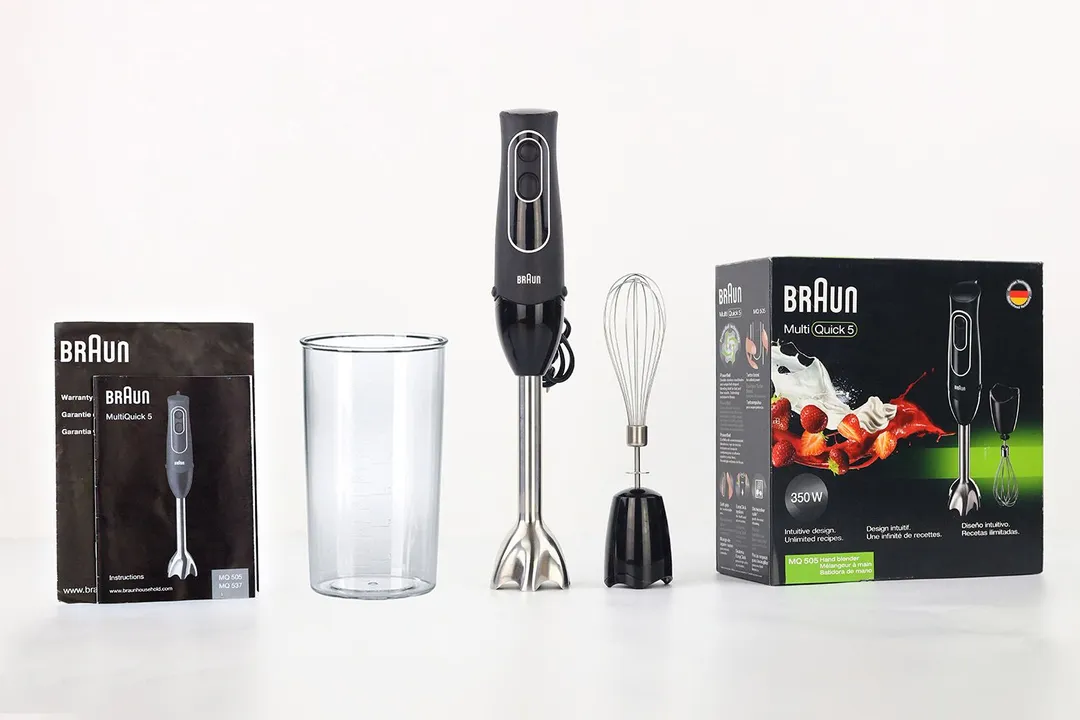
Things We Like
- Consistent, splash-free performance.
- Comparable efficiency to pricier Vitamix blenders.
- Ergonomic handle for a secure grip.
- Remains cool even during heavy-duty use.
- Versatile with a generous accessory set.
Things We Don’t Like
- Metal blending shaft and whisk could potentially harm non-stick coatings.
Balancing affordability with satisfactory performance, the Braun MultiQuick-5 is a worthy contender in the mid-range category. While its aesthetic may not be striking, it more than compensates with the ability to manage a wide range of textures.

The real test of this immersion blender comes with pureéing performance, where it comfortably surpassed our expectations with smooth, creamy soup blended in only 30 seconds. Equally impressive was its near-perfect frozen fruit smoothie ready in just one minute.
Its whisk attachment was also a game-changer. It allowed us to effortlessly crafted a delectably silky mayonnaise in under 2 minutes. And when it came to whipping large batches of egg whites, it turned the blender into a hand mixer, delivering flawlessly, achieving stiff peaks with remarkable ease.
The blender’s build, though not featuring the high-end materials seen in costlier models, reflects its price point appropriately. We found some minor external scratches during our testing, but these cosmetic imperfections don’t impair its capability.
Our Braun MultiQuick-5 had straightforward controls. It also features an ergonomically designed handle which is coated with a distinctive rubberized layer. Together with the blender’s minimal weight, this made it simple and comfy to handle, even when our hands were wet or greasy.
Be mindful, though, the trigger demands a bit more pressure than average, which may pose challenges for users with weak grips or long nails.
Read our full Braun MultiQuick 5 Hand Blender in-depth review
5. Best Personal: NutriBullet Pro 900W Personal Blender

Things We Like
- It is very easy to assemble and use.
- Stainless steel extractor blades are tough enough to power through even solid ingredients like ice cubes.
- BPA-free plastic cups are durable and dishwasher safe.
- Hands-free operation offers superior convenience
- Motor base is very stable.
Things We Don’t Like
- It's difficult to clean the blades’ undersides.
The NutriBullet Pro earns top marks for its remarkable ability to produce nutrient-packed meals. It doesn’t sacrifice performance for its small footprint. Instead, this little powerhouse matches—or even surpasses—the capabilities of its full-sized counterparts.
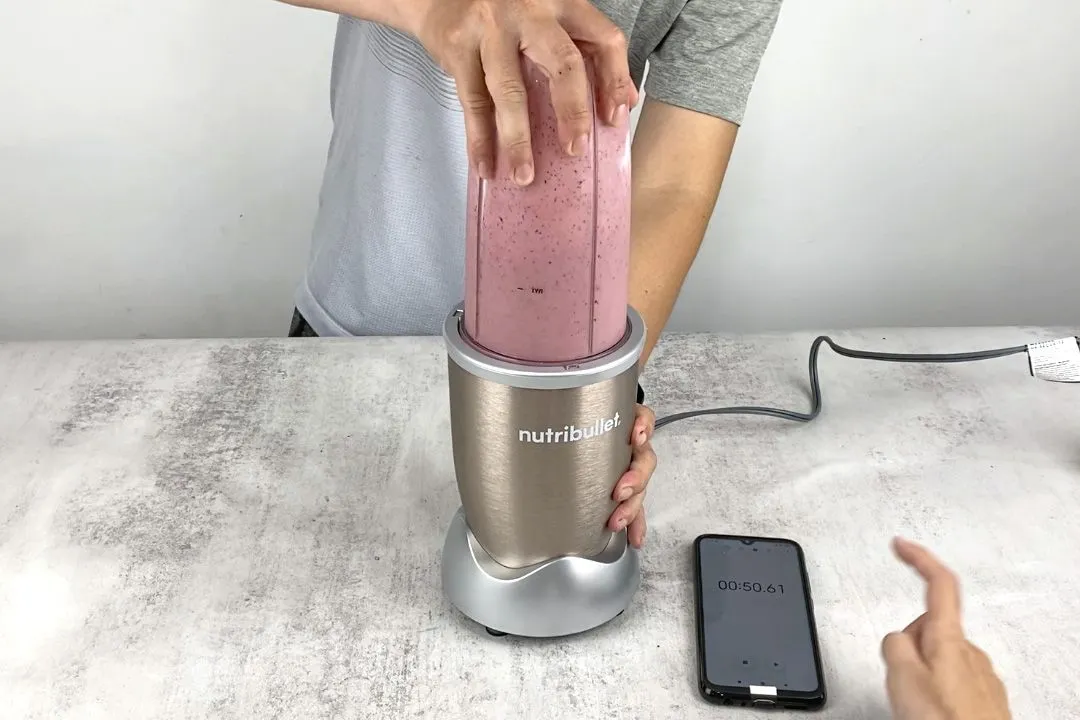
Among all the personal blenders we've tested, the NutriBullet Pro is the most versatile, managing a variety of ingredients swiftly and effortlessly. In the protein shake test, it was the fastest contender, mixing a silky-smooth workout drink in only 40 seconds.
It also produced an unparalleled frozen fruit smoothie in less than a minute and expertly processed leafy greens into their finest state within only 20 seconds. Indeed, no other personal blender we tested could produce such ideal textures in the same time frames.
The combination of fast-spinning blades and a 900-watt motor also made ice crushing a breeze. It allowed the blender to finish the task in about 40 seconds, and so far we haven't found a single machine that can crush ice as fluffy as this one.
However, the NutriBullet Pro is not just about power and performance; it also scores highly on design and durability. Its motor base, although susceptible to scratches, is well-crafted. The durable blending cups, meanwhile, can withstand both scratches and high speeds.
Moreover, the blades are designed for strength rather than sharpness, which actually makes it better at pulverizing ingredients for optimal nutrient extraction.
Read our full NutriBullet Pro 900W Personal Blender in-depth review
Nearest Competitors
A few quick notes on other blenders we tested:
- Vitamix E310: Compared to the Vitamix 5200, the E310 offers the same premium and classic blender feel but at a more affordable price. It even could transform 12 oz of solid ice into snow-like consistency in just 30 seconds, winning hands-down against the 5200 with ease. However, its 48 fl. oz. capacity is smaller than the 5200's 64 fl. oz., making the latter better for larger needs.
- Vitamix 5-speed: While the Vitamix 5-speed delivered remarkable blending capabilities in our test, we decided against designating it as our top pick due to its premium price, which may not be accessible to everyone. Plus, the lack of a whisk attachment made it somewhat less versatile when compared to the Braun MultiQuick-5.
- Ninja QB3001SS Fit: The Ninja Fit and NutriBullet Pro offer similar performance efficiency, but the Ninja QB3001SS Fit is less convenient to use as it lacks hands-free operation feature. To operate it, you must hold the cup in place throughout the blending process, and at times, you might need to shake or stir the contents to ensure even blending.
Our Expertise
Tina Pham is a seasoned tester who’s been with us at HealthyKitchen101 since 2018. She brings with her a wealth of experience in different types of blenders including immersion, personal, and full-sized models. Her most recent testing initiative was a result of her collaboration with Chef Tuyet Pham and Test Lead Lap Vo. Together, they conducted in-depth research, developed a test process, and analyzed the recipes.
Over the course of two years, Tina and her team have tested more than 35 blenders using a combination of laboratory-style testing and real-world usage scenarios. They wanted to evaluate the appliances not only in their new condition but also after months of regular use. Their methodical execution and attention to detail resulted in accurate and reliable testing results.
FAQ
Choosing a blender requires considerations that go beyond just brand name. It involves a deeper understanding of crucial aspects like power, speed settings, design, and more. But most importantly, determine which kind of blender—immersion, personal, or full-sized—best aligns with your needs.
For a deep dive into each type's specifics, find detailed insights here.
Blenders are best for liquids and semi-liquids, ideal for smoothies, milkshakes, and purees with multiple speed settings. On the other hand, food processors excel in tasks like slicing, chopping, grating, and dough preparation. They have larger bowls suitable for batch cooking and can handle both solid and semi-solid foods.
For a detailed breakdown of blenders versus food processors, check out this comprehensive comparison.
Food mixers, ideal for bakers, come in two varieties: stand mixers for serious baking and hand mixers for lighter tasks. In contrast, blenders specialize in liquifying ingredients for drinks and purees. Their function ranges from handheld immersion blenders for quick tasks to full-sized versions for bulk preparations. Unpack their full capabilities with our extensive comparison guide.
While blenders turn whole fruits into fibrous smoothies, juicers extract concentrated juices leaving out the pulp. If you seek digestion-friendly smoothies, go for blenders; for easy-to-digest, nutrient-packed drinks, choose juicers. To perfect your decisions, check our detailed analysis.
About your guide
Tina Pham is a staff writer and reviewer, with five years of experience in the industry. As a passionate amateur home cook, she loves to discover practical cooking solutions, and has made it her mission to bring her findings to every kitchen. Her ultimate goal is making cooking more of a pleasure for all.
Luna Regina is an accomplished writer and author who dedicates her career to empowering home cooks and making cooking effortless for everyone. She is the founder of HealthyKitchen101.com and HealthyRecipes101.com, where she works with her team to develop easy, nutritious recipes and help aspiring cooks choose the right kitchen appliances.
Lap is Head of the Research, Testing, and Review Team (RTR Team) at HealthyKitchen101.com, where he directs and supervises the testing of kitchen gadgets and appliances.
Tuyet Pham is an award-winning Saigonese chef passionate about delicious and healthful foods. At HealthyKitchen101, she develops recipes and collaborates with our Research, Testing, and Review lab to evaluate the performance of cooking appliances. Her assessments add a strong authoritative voice to our product scoring process.
Nguyen Ntk is a graphic designer, photographer, and videographer whose philosophy centers around respecting and celebrating the beauty of reality. Through his lenses, Nguyen strives to capture the true essence of objects and events, showcasing and highlighting authentic features without distortion or exaggeration.




